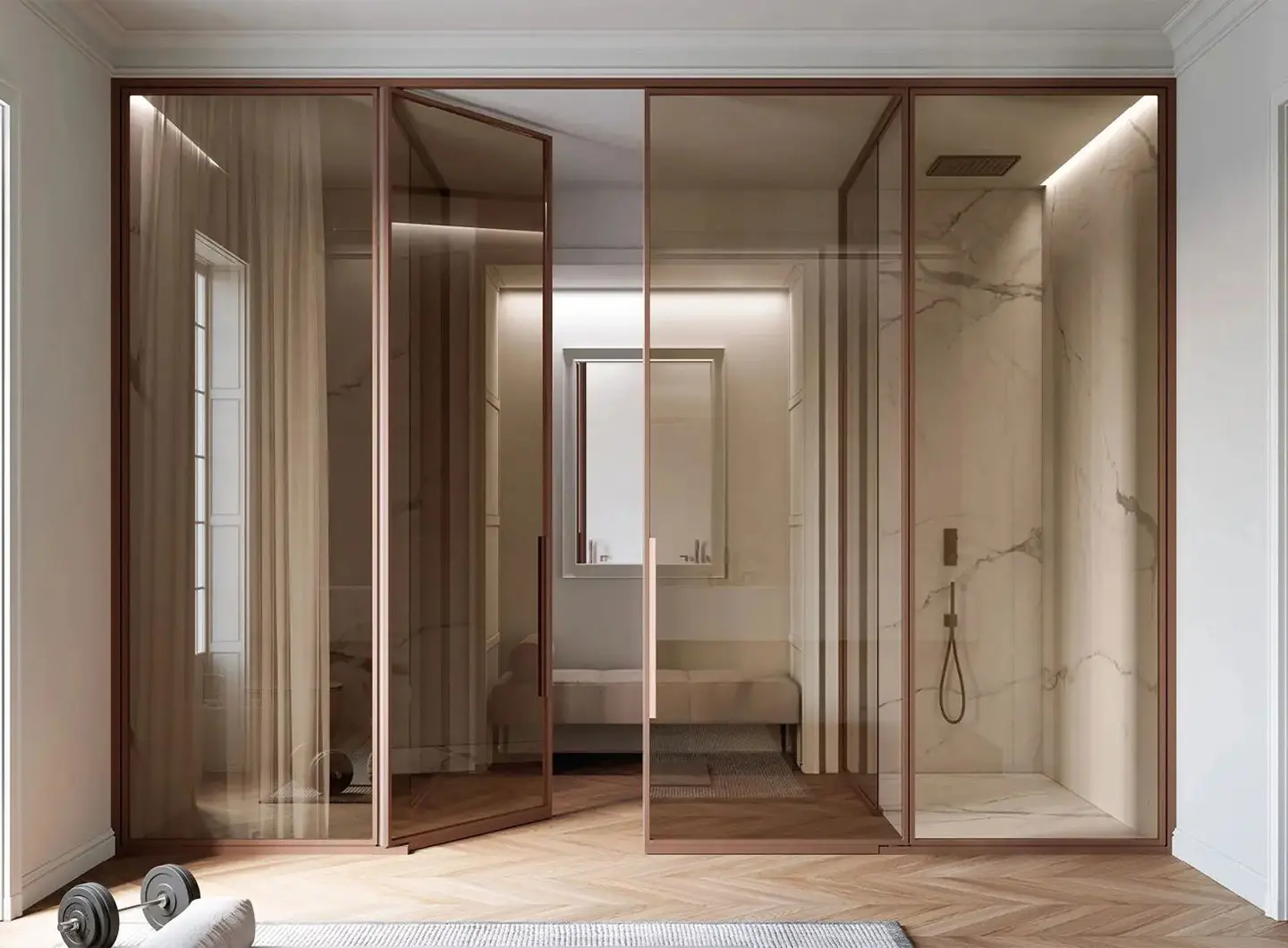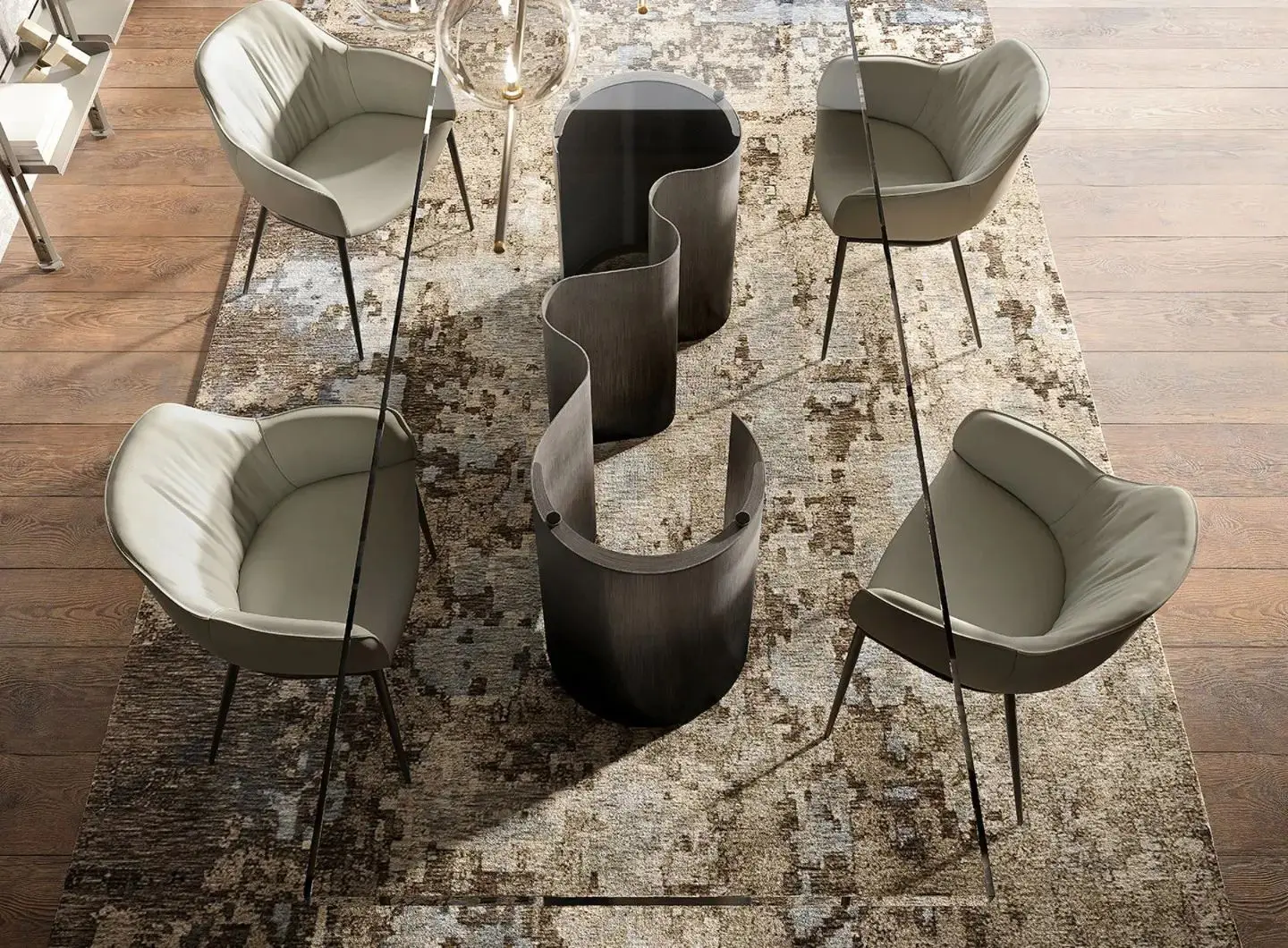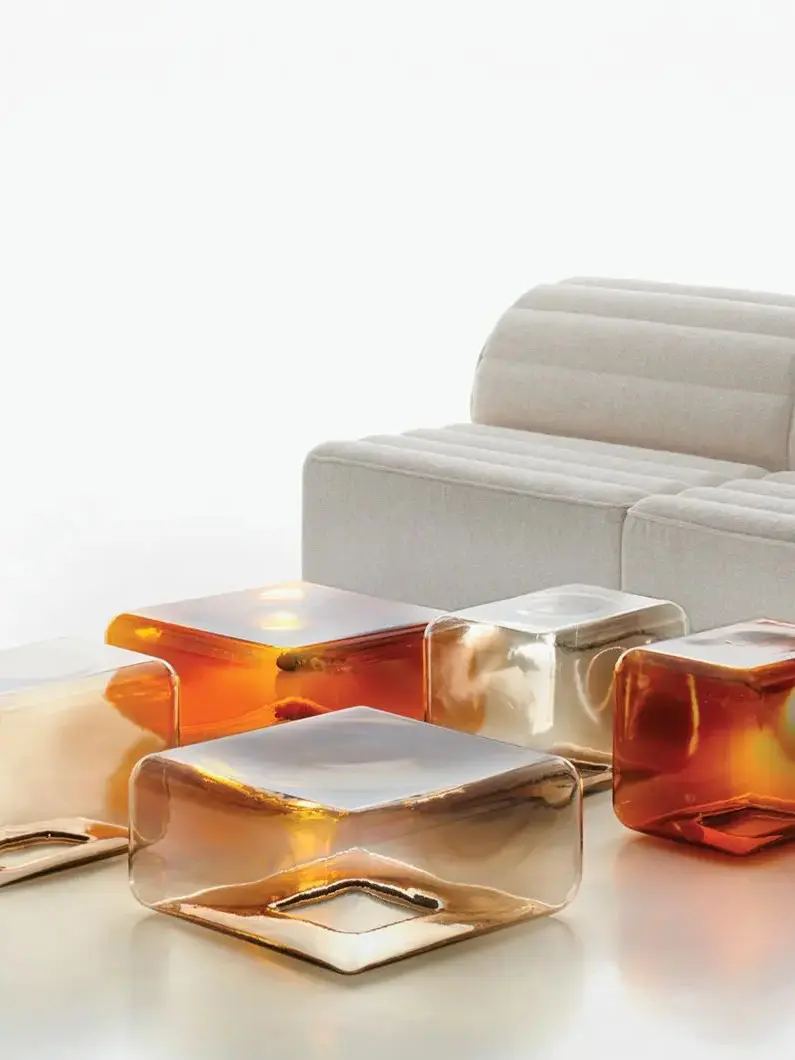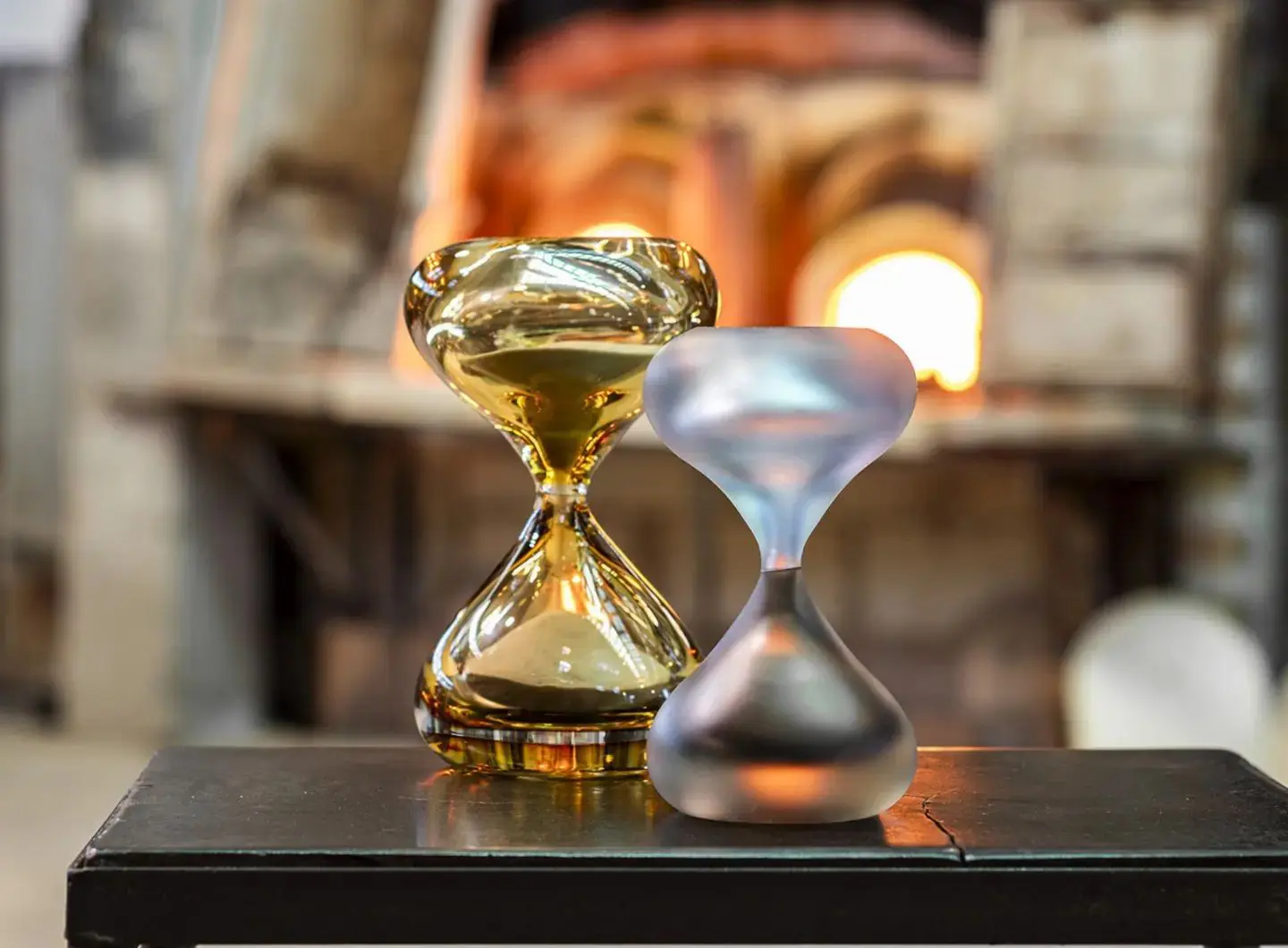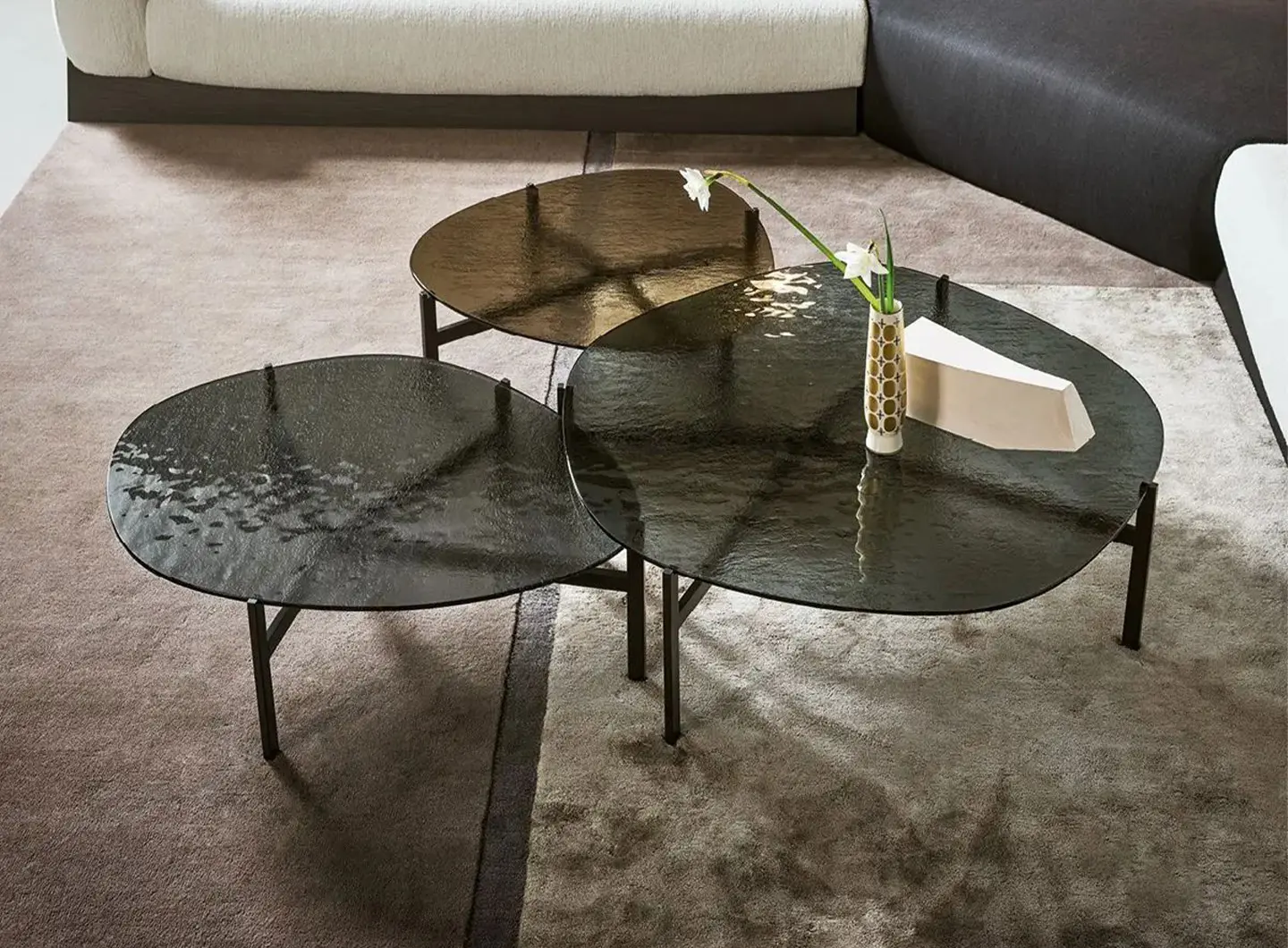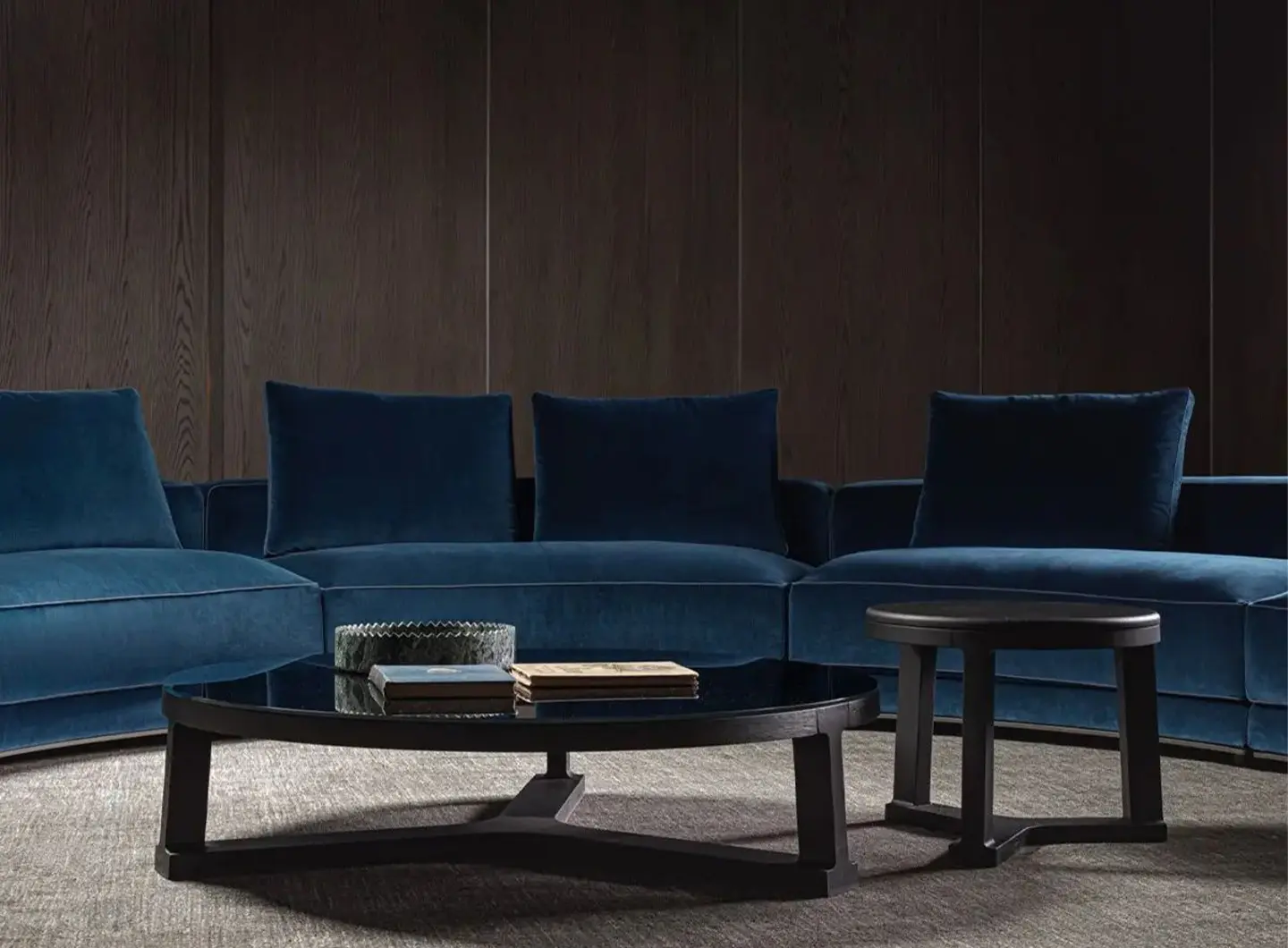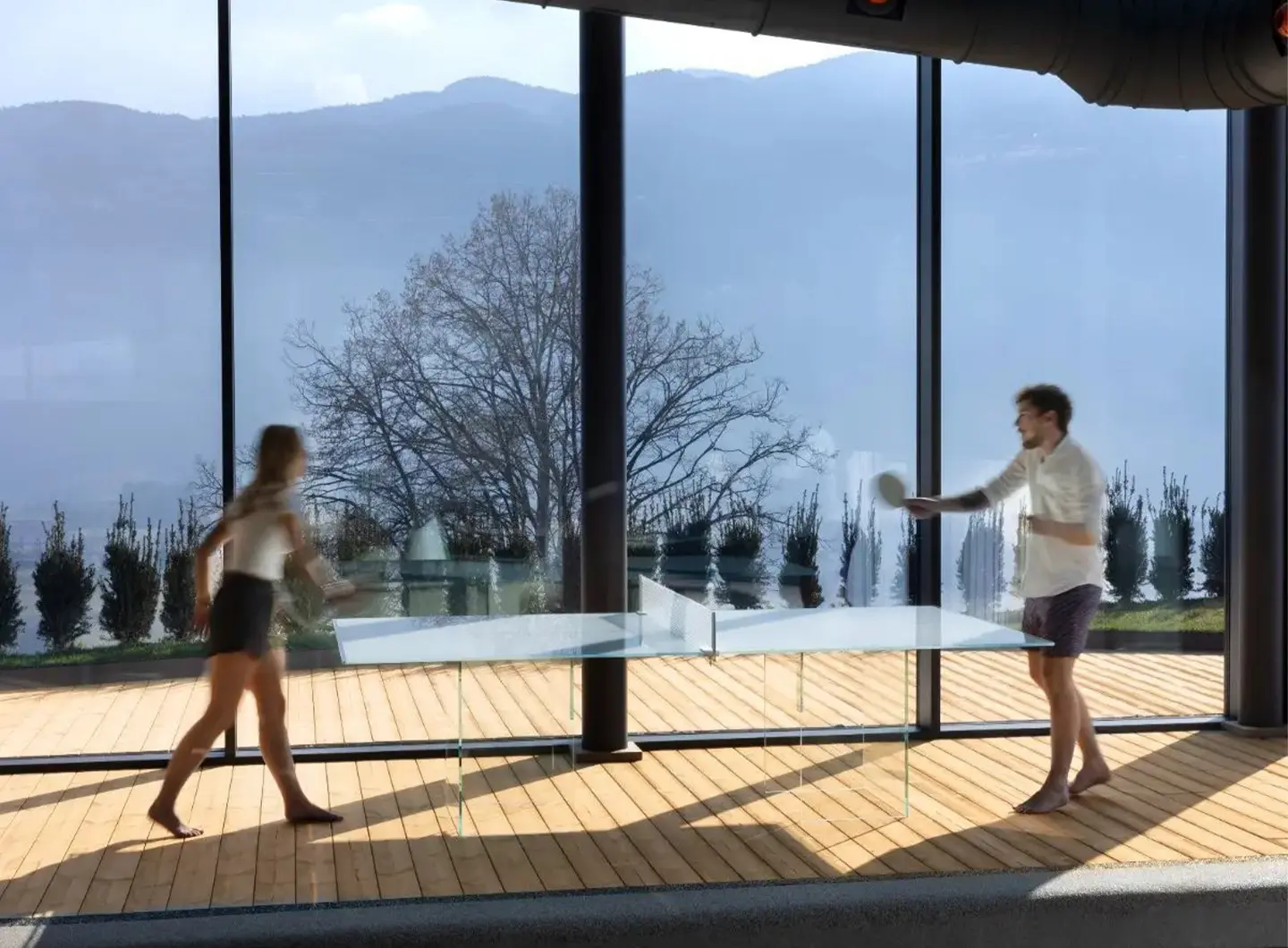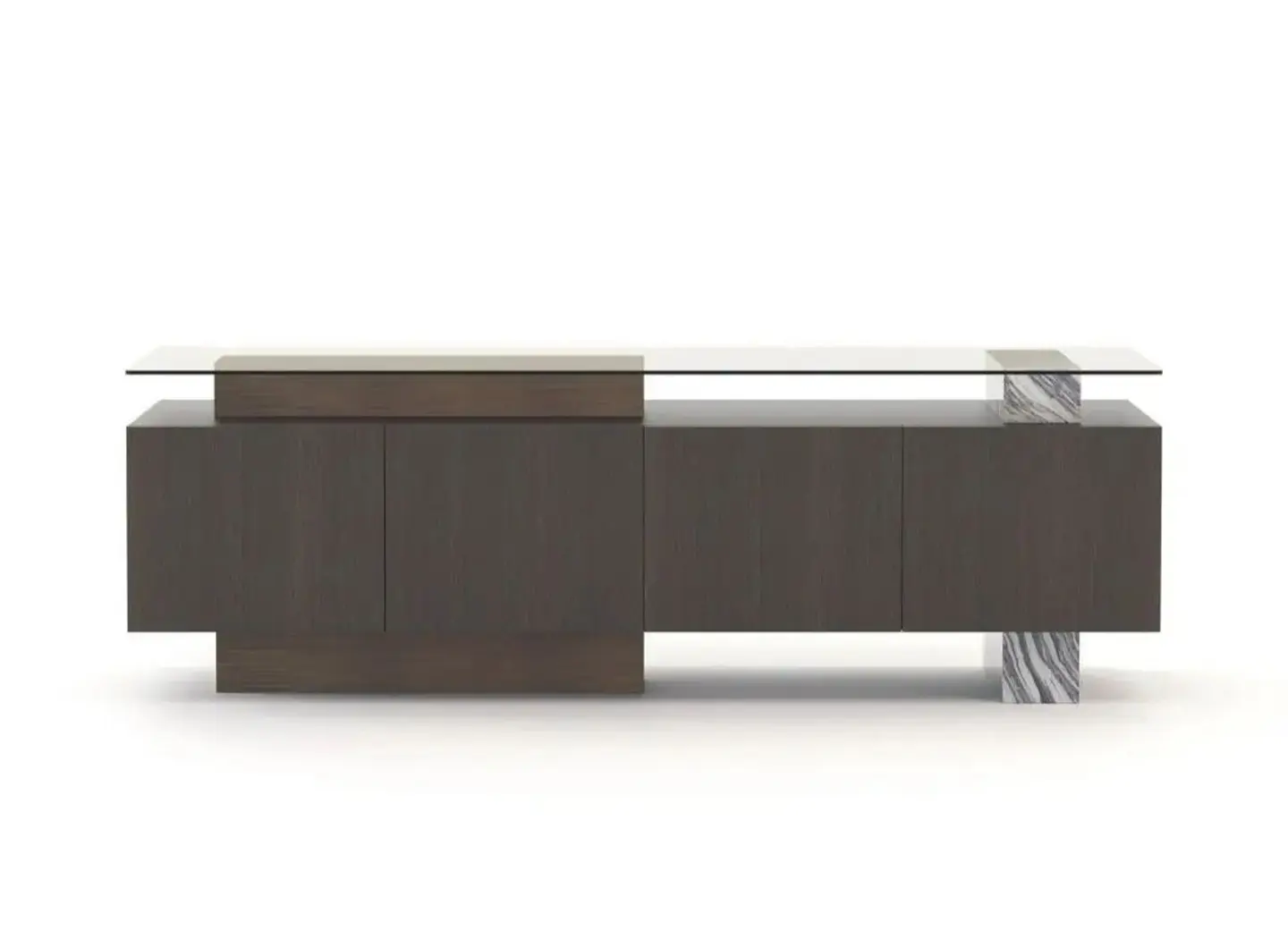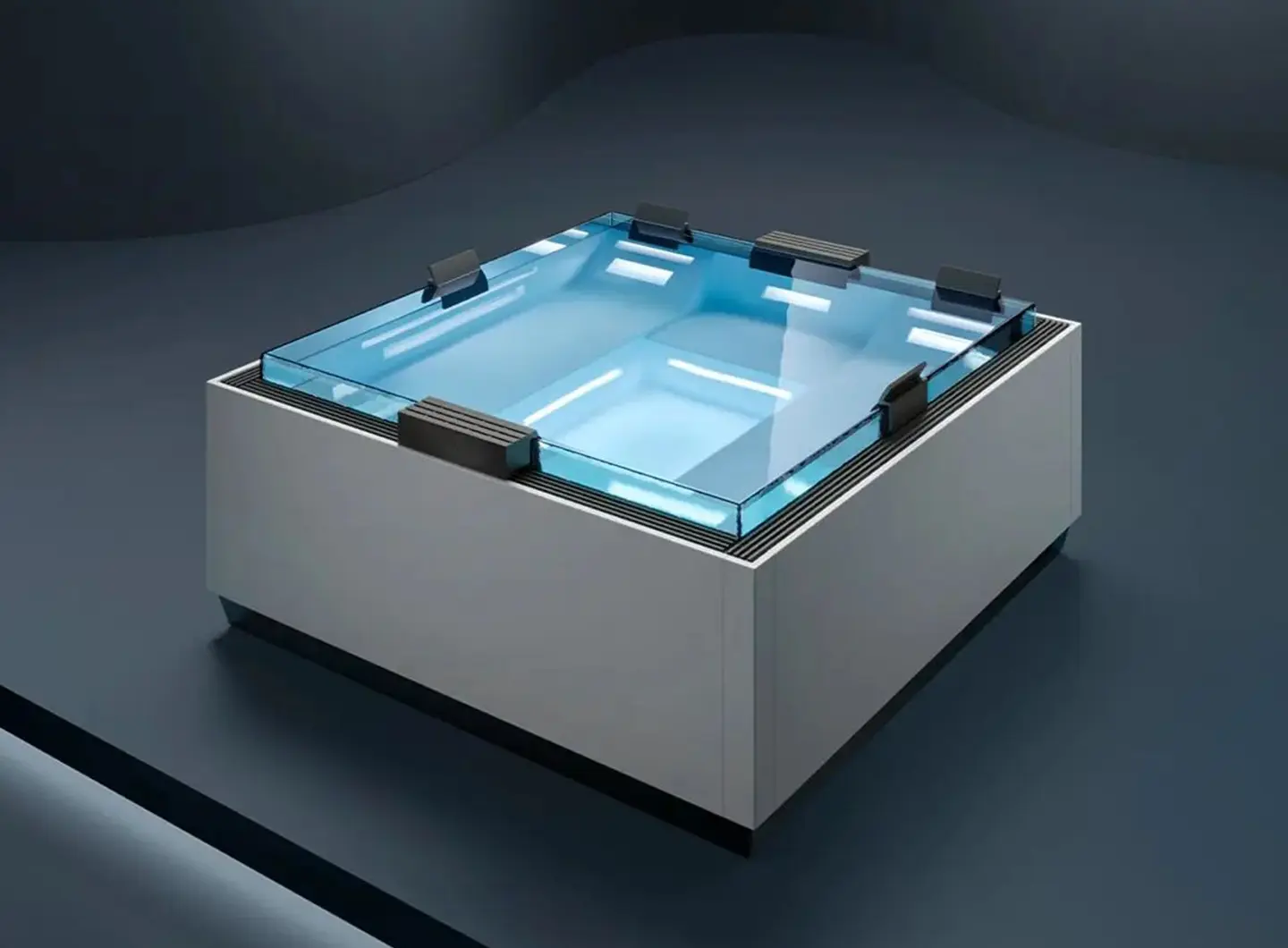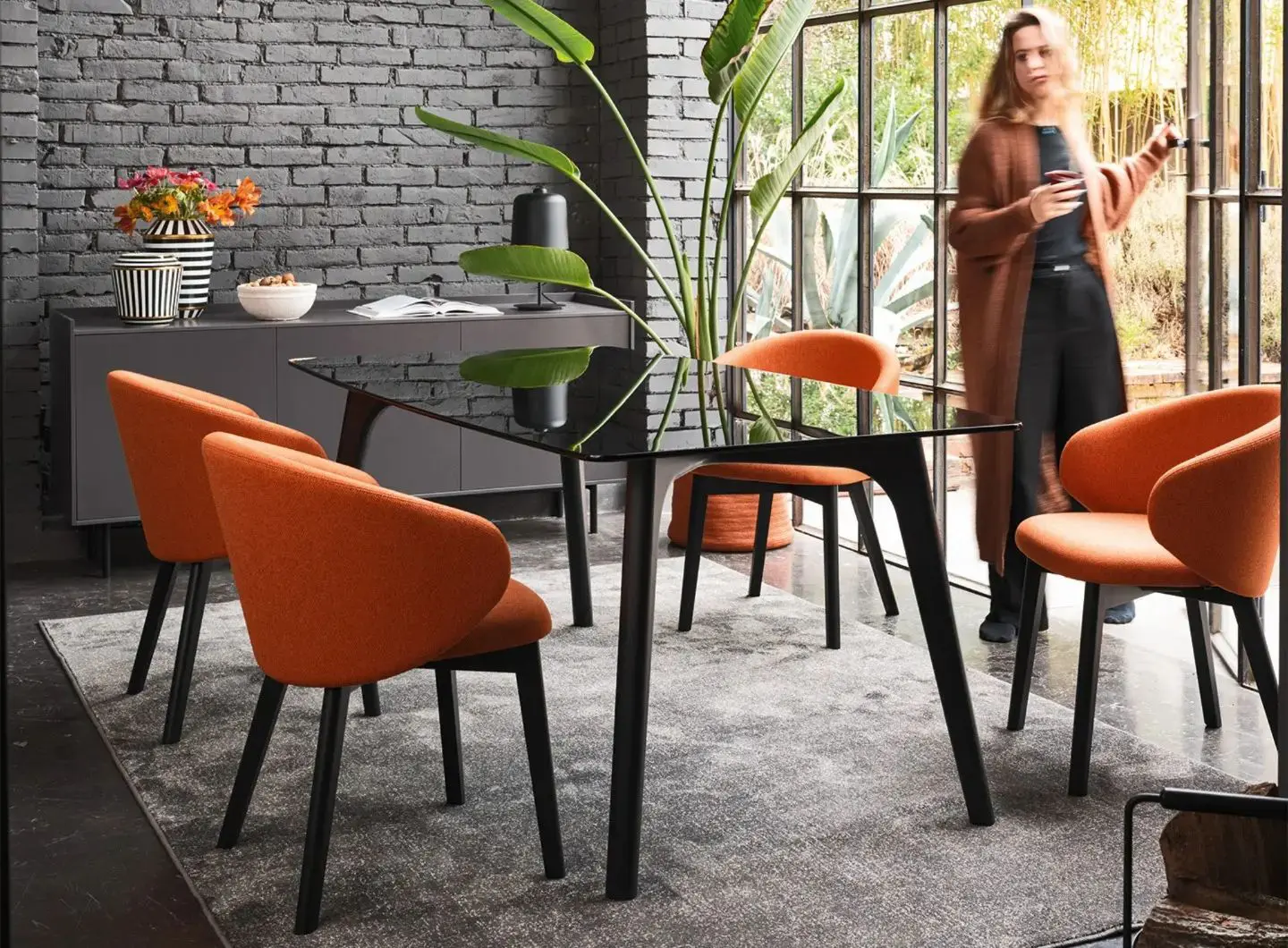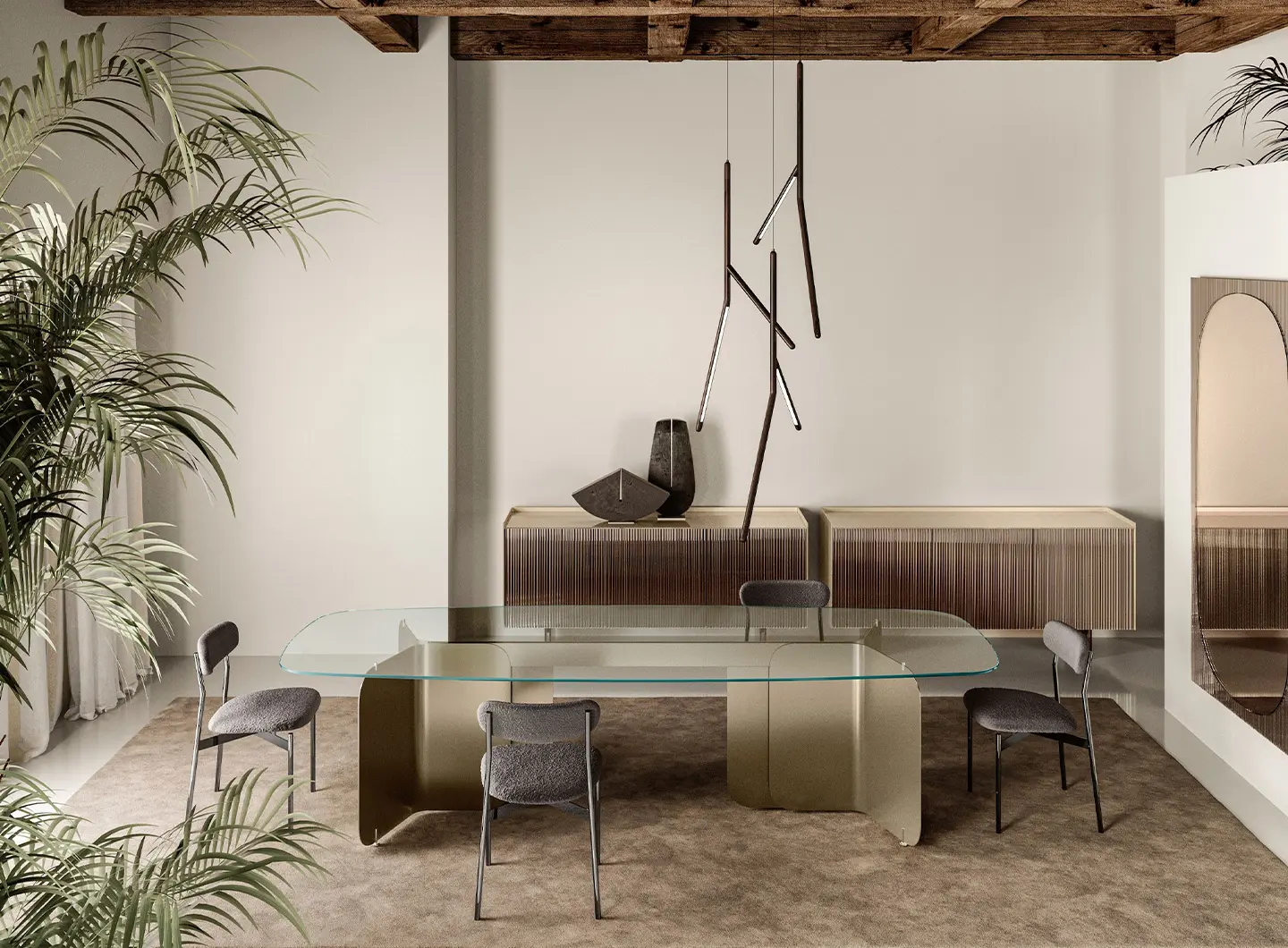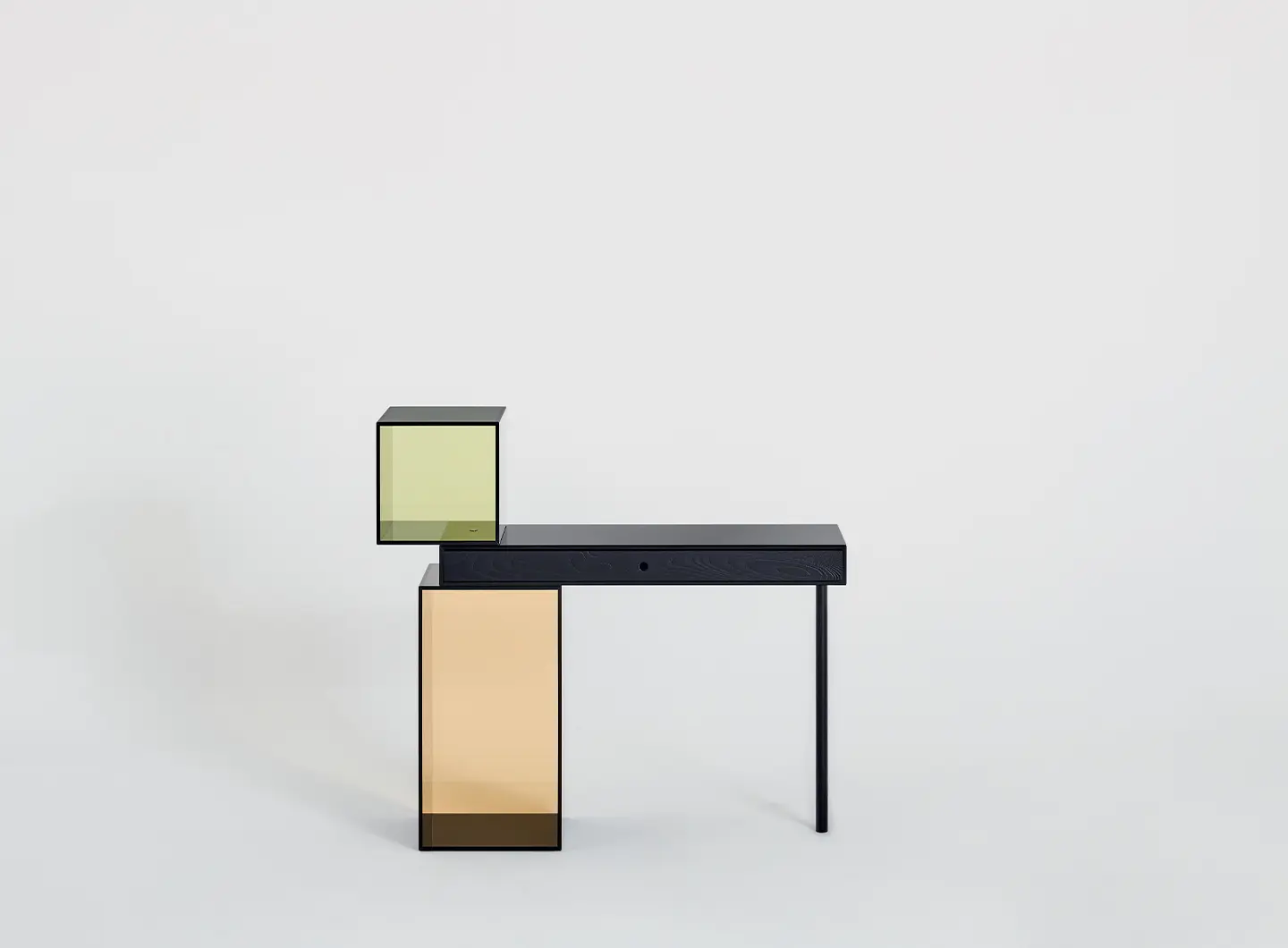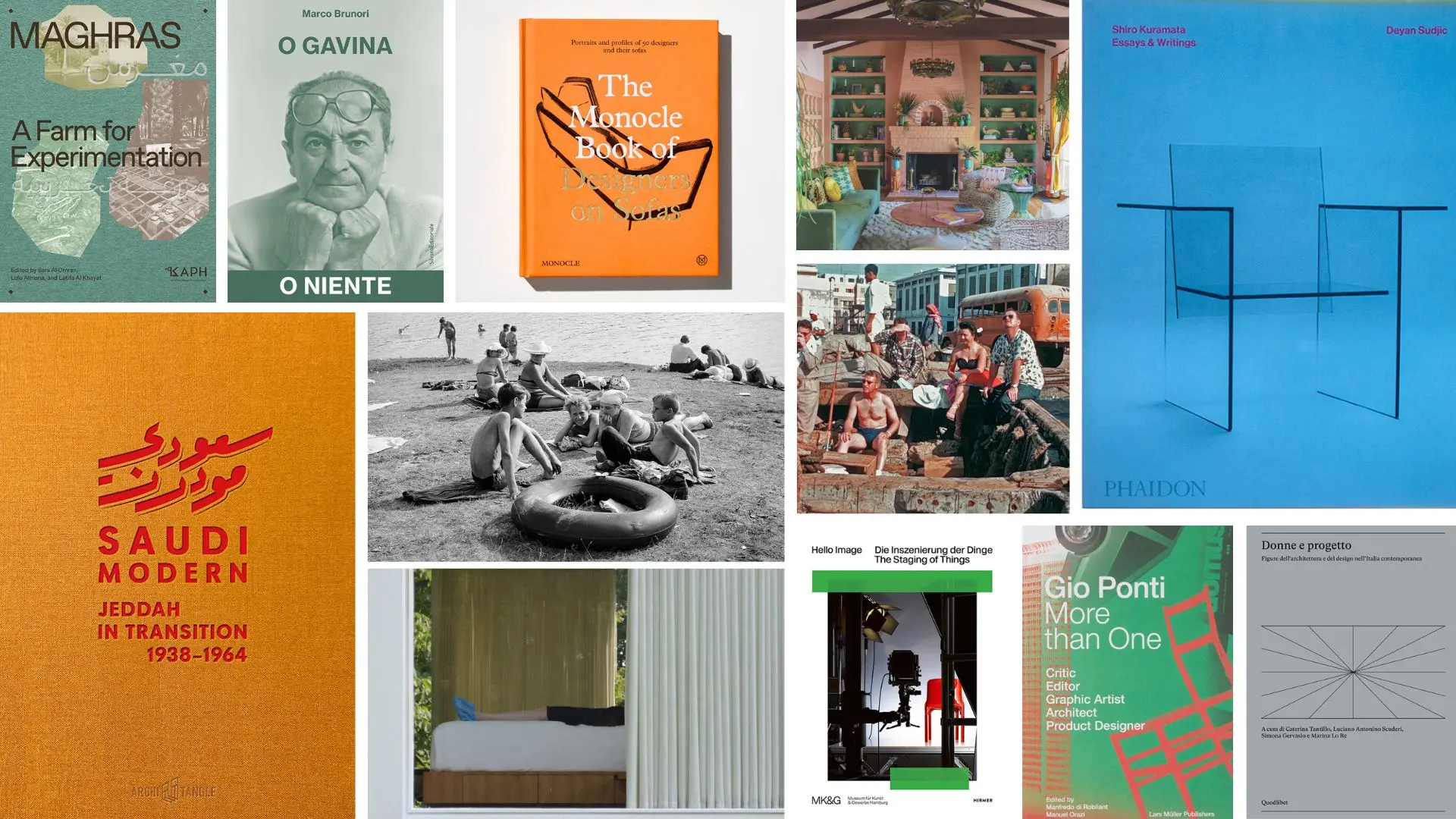From a reflection on humans to matter as meaning: the new Salone communication campaign explores the physical and symbolic origins of design, a visual narration made up of different perspectives, united by a common idea of transformation and genesis
Glass furniture: the very latest at the Salone del Mobile 2024
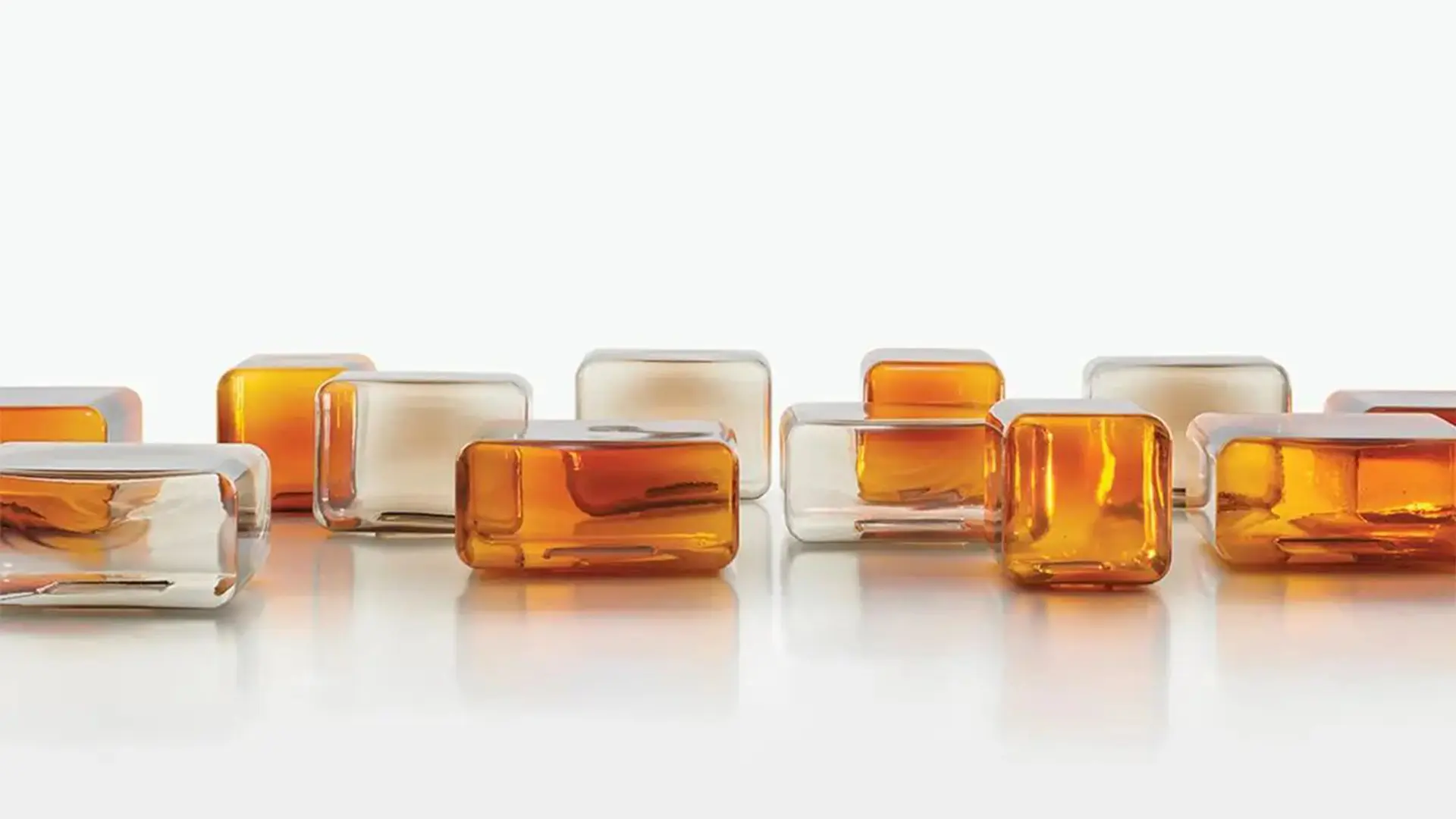
Acerbis, Lokum, design by Sabine Marcelis
A protagonist of interior design, glass is an ancient material that allows for unprecedented experimentation, thanks to modern technologies
Legend has it that a group of Phoenician sailors, shipwrecked by a violent storm, decided to light a fire on the beach where they washed up. While they were warming up, they noticed that the sand from the sea turned into a thick, transparent substance on contact with the fire and solidified as it cooled, taking on a variety of shapes. This was said to be how glass was discovered.
In actual fact the legend isn’t that far from the truth: glass can be found in nature and is formed precisely when quartz sand melts following a sharp rise in temperature caused, for example, by volcanic eruptions or lightning. When it cools this fused material becomes glass.
Never mind its origin. Nowadays this transparent, hardwearing, safe, light material has valuable sustainable qualities and, thanks to cutting edge production techniques, can be used by designers for hitherto unprecedented experiments.
Vismaravetro presented Suite, the only watertight wall system for private bathrooms and contract, the new version of which allows crystals of different finishes to be combined in the same element. Moreover, Suite’s hinged door, normally opened outwards, can now be opened both inwards and outwards, making for greater ease and simplifying the maintenance of the shower unit. Its inner dividing wall has also become more functional – having originally been fixed to separate the dry and wet areas, it now works as an actual door, allowing one to move from the shower to the dry area, without compromising its extraordinary watertightness.
Margherita Fanti has taken a sculptural approach to her Papel dining tables for Cattelan Italia, with sinuous curved single-piece metal bases supporting a sparkling sheet of glass. The Papel collection also includes Papel Keramik, which comes with a ceramic top and Papel Keramik Premium, which boasts a thick freehand Brushed border, as well as Papel Wood, with a natural wood top.
Handcrafted blown glass, on the other hand, characterises the Lokum series of coffee tables by Sabine Marcelis for Acerbis, with poetic and ethereal suggestions. Available in rectangular and square versions, in amber and smoked shades, Lokum offers great flexibility of use, both as a single piece and in combination with other elements to create unique, personalised configurations.
Venini has added a new series of Clessidre to its furnishing accessories catalogue, conceived by Fulvio Bianconi and Paolo Venini. The submerged glass envelops and encloses the two blown glass pieces that hold the flow of grains, achieved by means of the incalmo technique. In a world suspended between past and present, the new jewel-like Clessidre Sommerse narrate the implacable passage of time.
Flac is the name of the new collection of coffee tables designed by Fabrice Berrux for Bonaldo. The fused and tempered top gives the appearance of the moving surface of water floating above a slender metal base. The different heights of the tables allow for interesting compositions, characterised by a subtle interplay of superpositions making for different shades of colour where the glass tops intersect. A wood, ceramic or marble top is available in the medium and low versions.
Craftsmanship meets innovation in the Fonte series by Vincent Van Duysen for Molteni&C, with three new pieces designed for three different purposes. The sturdy oak legs of the coffee table, the lounge table and the bedside table that make up the collection support a marble, wooden or black back-painted glass tabletop. The subdued shades of the different tops combine with the colours of the base, coffee and black oak, to create a solid yet fluid interplay of colours.
Fas Pendezza is no stranger to surprising pieces - as in the case of Crystal, a ping pong table made entirely of glass, legs included, essential and elegant, designed by Basaglia + Rota Nodari.
The Toro sideboard in Stylish Club’s River collection combines different materials for a piece that is functional yet refined right down to the last detail: the dark oak veneer structure combined with the grey glass and antique brass-coloured details comes in shapes that will blend perfectly with furnishings of all sorts of different styles.
Marc Sadler harnesses glass for his elegant Ice swimming pool for Treesse with a light touch that increases the sense of visual continuity between the indoor and outdoor spaces thanks to the play of reflections on the transparent surface. Ice can accommodate up to 5/6 people; the two largest cushions serve to conceal the controls and turn into comfortable seats.
The Pod table from Connubia offers a fascinating contrast between the warm, solid nature of wood and the ethereal, modern nature of glass. The solid wood base acts as a distinctively solid and robust counterpart to the light transparent or smoked glass tops, which in turn allow the sophisticated craftsmanship of the finely bevelled and polished wood to shine through. The tapered legs bestow dynamism and lightness and the organic connection between these and the crosspiece makes for a distinctive detail.
A thin sheet of curved metal supports a glass top in rectangular, shaped or round versions: Pleat, designed by Massimo Castagna for Tonelli Design, is a table with perfect proportions and an enveloping style. Pleat is available with a base in metallic champagne and brushed titanium finishes, or black-painted opaque graphite and a top in extra clear, smoked or bronze glass or smoked or bronze fused glass.
Lastly, Ratio by Piero Lissoni for Glas Italia is a small desk made of stacked tempered smoked glass boxes held together by black chrome-plated metal joints. The top box contains a black-stained solid ash drawer, which sits and slides on the glass while the other boxes, which can be used as storage compartments, are available completely in smoked glass or with backs in different coloured transparent glass finishes.


 Exhibitions
Exhibitions
